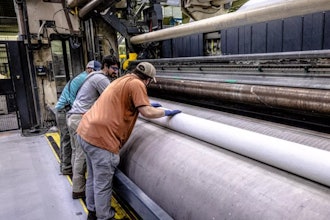
Everybody agrees that America’s future economic growth and international competitiveness depend on our capacity to innovate. In 2015 President Obama said, “America’s future economic growth and international competitiveness depend on our capacity to innovate. His plan, The Strategy for American Innovation, also said, ”Innovation-based economic growth will bring greater income, higher quality jobs, and improved health and quality of life to all U.S. citizens, and provides a multifaceted, common sense, and sustained approach to ensuring America’s future prosperity.[i]
America has been the source of new inventions for the world for most of the twentieth century. The following is just a partial list of some of the inventions by the year they were patented:
- Microwave Oven (1945)
- Transistor (1947)
- Defibrillator (1947)
- Bar Code (1952)
- Hard Disk Drive (1955)
- Industrial Robot(1956)
- Video tape (1956)
- Integrated Circuit (1958)
- LASER (1960)
- Light Emitting Diodes (1962)
- Hand calculator (1967)
- Microprocessor (1971)
- Global Positioning (1973)
- Mobile phone(1973)
- Personal; Computer (1981)
- Internet (1982)
The Long-Term Problem
Unlike most of the inventions prior to World War II, most of the inventions listed above are no longer manufactured in America. So, American companies did the research and development of the original products, but then allowed them to be manufactured in foreign countries. The same process goes on today, but we are now not only losing the technologies, we are losing whole industries.
This scenario begs the obvious question. How many technologies and industries are we willing to lose before we lose our ability to compete using innovation as our primary strategy?
A strategy of Innovation is a noble idea, but does not address the issue of losing the new products and technologies through outsourcing and technology transfer agreements. If new technologies are invented in the U.S. and then the manufacturing is outsourced to a foreign country, the inventing company eventually loses control of the technology and the market. If we can’t reverse this trend then a strategy of innovation is a moot point.
I have been watching outsourcing since the 1980s, and there seems to be a pattern in what happens to the industries and companies:
- It begins with a U.S. corporation seeking a cost advantage and better short-term profits by outsourcing parts of a product to a foreign country.
- Once the corporation realizes the cost advantage, its competitors follow suit to try and stay competitive in the market.
- Most people don’t realize that along with the product, the critical knowledge, skills, tools and process engineering also leave with the product and the foreign manufacturer is free to find their own suppliers and sources of materials, eliminating U.S. suppliers from the supply chain.
- After a time, foreign manufacturers are not satisfied with just making the parts and begin to seek higher value-added work or a greater share of the total product and move toward complete product assembly and management of the whole supply chain.
- Once the foreign manufacturer has enough experience, they can do the design engineering and eventually don’t need the U.S. OEM and take over the market. So, in chasing short-term cost reductions and profits, the U.S. OEM inadvertently establishes the foreign supplier as a competitor and loses both the product and the market.
Advanced Technology Industries
Semiconductors are part of a government designation called the Advanced Technology Industries (ATIs), which are industries that are at the forefront of economic growth. The sector includes 50 industries: 35 manufacturing, three energy, and 12 service industries. They range from oil and gas to aerospace, biotechnology, life sciences, opto-electronics, communication, weapons, computer systems, nanotechnology, and software.
These industries also include most of the disruptive technologies, such as additive manufacturing, advanced materials, advanced robotics, big data analytics, cloud computing, and the Internet of Things.
The ability to create these new technologies, particularly digital technologies, has implications for national security, economic growth, and the standard of living of most American citizens. You would think that the contribution of the Advanced Industries is so vital that the government would go all out to protect them as a vital national asset. But as important as ATIs are, there are big problems emerging.
Chart A shows that America has been running trade deficits since 2002 in 10 key industries.

We are losing the trade war for our advanced technology products, and we are losing it badly. The only thing that has offered some protections are the 25 percent tariffs under Section 301 of the 1974 Trade Act.
Solutions
Government. To compete effectively with China, the federal government needs to develop an advanced industry and technology strategy — a set of policies and programs explicitly designed to support specific targeted industries and technologies. The government also needs to limit access to the advanced technologies using national security restrictions or tariffs.
Multinational Corporations(MNCs). If we are to have any chance of competing with an innovation strategy, MNCs need to stop or reduce licensing arrangements that give their competitors easy access to their technologies. It may lead to short-term profits for the corporation, but eventually the corporation will lose the technology and the market to its foreign competitors. It is effectively handing its foreign competitors the rope to hang it with
I began this article with a quote from President Obama about how a strategy of innovation was going to ensure the nation’s prosperity, but neither he or his economic advisors seemed to understand that we can’t have an innovation strategy without manufacturing. Seventy percent of our exports are industrial products - not services, and manufacturing also funds 55 percent of all private R&D.
So, any chance of developing an innovation strategy requires protecting and growing American manufacturing.
Michael Collins is the author of a new book, Dismantling the American Dream: How Multinational Corporations Undermine American Prosperity. He can be reached at mpcmgt.net.






















